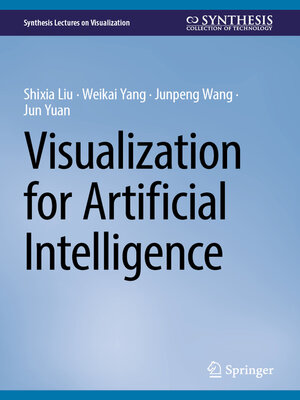
Sign up to save your library
With an OverDrive account, you can save your favorite libraries for at-a-glance information about availability. Find out more about OverDrive accounts.
Find this title in Libby, the library reading app by OverDrive.



Search for a digital library with this title
Title found at these libraries:
| Loading... |
This book explores how visualization provides an effective way of improving not only the interpretability but also the generalization capabilities of machine learning models. It shows how visualization can bridge the gap between complex models or algorithms and human understanding while also facilitating data curation and model refinement. Therefore, visualization for artificial intelligence (VIS4AI) has become an emerging area that combines interactive visualization with machine learning techniques to maximize their values. VIS4AI techniques focus on every phase of the machine learning life cycle, from data preprocessing to model development and deployment. These techniques are closely aligned with the well-established data and model pipelines in machine learning. In the data pipeline, they contribute to improving data quality and feature quality, including training data cleaning and feature engineering. In the model pipeline, they support (1) model development by focusing on model understanding, diagnosis, and steering; and (2) model deployment by enabling decision explanation, model performance monitoring, and model maintenance.
This book provides a framework of VIS4AI and introduces the associated techniques in the two pipelines. It emphasizes the importance of interactive visualization in AI and presents various visualization techniques for different purposes. It also discusses the challenges and opportunities of VIS4AI and proposes several promising research topics for future work, such as improving training data using complementary modalities, online training diagnosis, fitting the dynamic nature of AI systems, and interactively pre-training and adapting foundation models. Overall, this book aims to serve as a resource for researchers and practitioners interested in both visualization and artificial intelligence.






